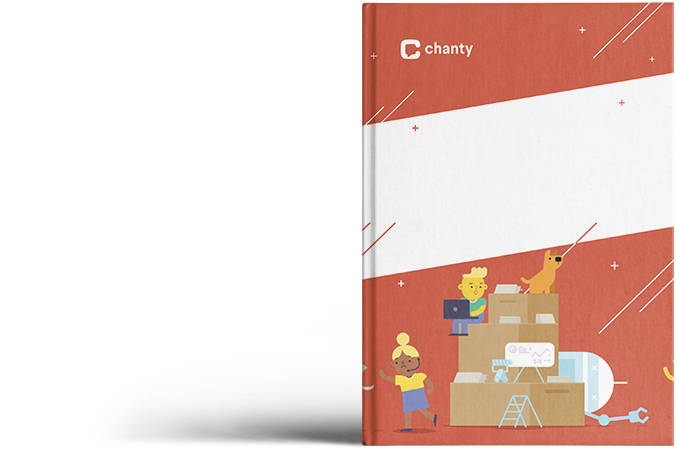These days, communication with peers and coworkers is a top need, and many software companies are available to help businesses interact efficiently.
Although there are various options available, if you know which tools are the best fit for your business, you can ensure that you are getting the most out of your money and time.
Let’s dig deep into how employees in 2023 will communicate with each other online and what tools they may need for synchronous communication.
Synchronous Communication in remote working teams
Any functional team must have effective communication as its backbone. It is also essential for remote teams that do not meet frequently.
The most popular means of remote communication include everything from basic tools like email, chat, intranets, video conferencing, and team collaboration software to all-encompassing remote working tools in unified digital workplace platforms.
When we talk about the different communication styles and forms, there are several ways to align the teams to reach their strategies. There are pros and cons to both asynchronous and synchronous communication strategies for remote working teams.
Asynchronous communication (such as email) can be helpful because team members can respond at their own convenience. However, this type of communication can also lead to miscommunication and misunderstandings.
Synchronous communication (such as webinar tools) can help to reduce miscommunication by allowing team members to see and hear each other in real–time.
However, this type of communication can be less convenient because team members must be available simultaneously. Ultimately, the best communication strategy for a remote team depends on the members’ needs and preferences.
This blog will look at some of the best options for synchronous communication tools.
Difference between asynchronous and synchronous communication
Asynchronous communication is a type of communication that doesn’t take place in real-time. This means there is a bit of a delay from when a message is sent to when it is received, read, and replied to.
When should I use a synchronous tool?
There are a host of factors to consider when deciding whether to use a synchronous or asynchronous communication tool. The most crucial factor is the purpose of the communication. If the goal is to convey information that is time–sensitive or requires immediate feedback, then a synchronous communication tool is the better choice.
Conversely, suppose the purpose of the communication is to exchange information that is not time–sensitive or does not require immediate feedback. In that case, an asynchronous communication tool is the better choice.
Advantages of a synchronous communication
Synchronous communication tools have some advantages over asynchronous tools. For one, they allow for real–time communication between parties, which can be essential for coordination purposes.
Additionally, synchronous tools can provide a sense of presence and connection that can be lacking in asynchronous tools.
Finally, synchronous tools can be less prone to miscommunication since all parties are typically on the same page (literally and figuratively) simultaneously.
Disadvantages of a synchronous communication
There are several disadvantages to using synchronous communication tools, such as technical difficulties that cause the audio or video to be choppy or delayed, making it difficult to communicate effectively.
Synchronous communication can be very time–consuming. It can take away from productive work time, especially if it is used for long meetings or conference calls.
The shift in trends from synchronous communication to asynchronous communication
Asynchronous communication is the future because it allows people to communicate without being tied to a specific time or place.
This type of communication is especially beneficial for people who are always on the go or have a lot of commitments. Asynchronous communication also gives people more control over their time and how they spend it.
Asynchronous communication allows people to communicate without being in the same place at the same time. This is especially important in a global economy, where people often need to communicate across time zones.
Second, asynchronous communication is more efficient than synchronous communication because it allows people to have conversations without interruption. This means that people can have more productive conversations because they can think about what they want to say before they say it.
Finally, asynchronous communication is more flexible than synchronous communication because it allows people to use a variety of communication tools, such as email, video conferencing and instant messaging. This flexibility makes it easier for people to find a communication method that suits their needs.
elearningindustry.com
The next-generation tools for synchronous communication
Live stream
Chanty
Chanty is a synchronous communication tool that allows users to communicate in real–time and doesn’t limit the communication history. It is great for team collaboration, as it offers much more than only communication. You can also have video and voice calls, share files, and create tasks from the messages and manage them with the help of the Kanban board.
Pricing
- The free plan costs $0 forever.
- The Business plan costs $4 per user per month.
Pros
- Unlimited messaging
- Audio/video calling
- Built-in task manager with Kanban
Cons
- Joining a call by a link is not available at this time
Zoom
Zoom is a synchronous communication tool that can be used for online meetings, webinars, and distance learning. It is a good way to connect with others in real–time, whether they are in the same room or across the globe. Zoom offers high–quality audio and video, as well as screen sharing and chat features. It is relatively easy to use and can be accessed via any device.
Pros
- Supports large team members
- Can host meetings/webinar on Facebook
- Can access Zoom for free
Cons
- Too many subscriptions
- HD quality video is not upto the mark
Google Meet
Google Meet is a powerful synchronous communication tool that can be used for a variety of purposes. With Google Meet, you can easily connect with others in real–time, whether you’re working on a project together or just catching up.
Google Meet also makes it easy to share your screen or present slides, so you can easily collaborate on a presentation or document. And because Meet is built into the Google ecosystem, you can easily connect with others who are using Gmail, Calendar, or Drive. Whether you’re looking to connect with colleagues or friends, Google Meet is a great option for synchronous communication.
Pros
- Integrates flawlessly with other Google Workspace services.
- Excellent customer support
- Easy access
Cons
- Less features
- 100 participants maximum
- No capability to record sessions
Microsoft Teams
Microsoft Teams is a collaboration platform that enables users to communicate and work together in real–time. Teams provide a variety of features that allow users to stay connected and productive, including chat, video conferencing, file sharing, and more.
Teams is an ideal platform for synchronous communication, as it allows users to instantly share ideas and collaborate on projects. The platform is also highly scalable so that it can be used by small teams or large organizations. With Microsoft Teams, businesses can improve communication and collaboration across the entire organization.
Pros
- Combining all tools into one location
- No extra charge
- Convenient chat adds
- Seamless file backup, collaboration, and search
Cons
- There are too many identical tools
- Use of unnecessary data
- Increased threat to security
Web conferencing
Zoho
Zoho is a great tool for synchronous communication because it powers business productivity by organizing people, conversations & workflows in one single place. It helps B2B companies stay on top of their sales operations by helping them create a common platform to keep their partners, vendors, and other business stakeholders in sync.
Pros
- The ideal CRM for customizing.
- Superb workflow team.
- Easy to create custom workflow.
- Excellent customer support.
- Easy to access.
Cons
- Complicated Integration
- AI assistant needs to improve
Online whiteboarding
Visme
The online whiteboard from Visme is ideal for non-designers and beginners. You can quickly develop ideas, draw them out, and create designs.
All the whiteboard templates from Visme are fully customizable, so you can give your whiteboard a unique look by including imaginative design elements. Simply sign into your free or premium Visme account, open a new project, choose “Whiteboard,” and then begin creating to set up your Visme Whiteboard.
Pros
- Ideal for quickly producing social media infographics.
- Excellent for developing effective corporate presentations.
Cons
- Very Generic pre-build templates.
- Takes time tp understand its functionality.
Miro
Miro is a synchronous communication tool that allows remote teams to collaborate in real–time. With Miro, team members can share ideas, provide feedback, and stay up–to–date on the latest project developments. Miro’s visual interface makes it easy to create and organize content, and its built–in features facilitate smooth and efficient collaboration. For these reasons, Miro is an ideal tool for remote teams that need to stay connected and work together productively for better team dynamics.
Pros
- Easy integration with other platforms.
- Real-time interaction.
- Simultaneous execution
Cons
- Even when the item is restricted to “only board owner can unlock,” the lock can still be opened by other users.
Conclusion
Nowadays, communication tools are not just tools but also experiences. The tools we use to communicate should be seamless, intuitive, and easy to use. With that in mind, we’ve listed the best tools for 2023 that will boost your team’s synchronous communication. Think of having a communication plan for your team.











Add comment